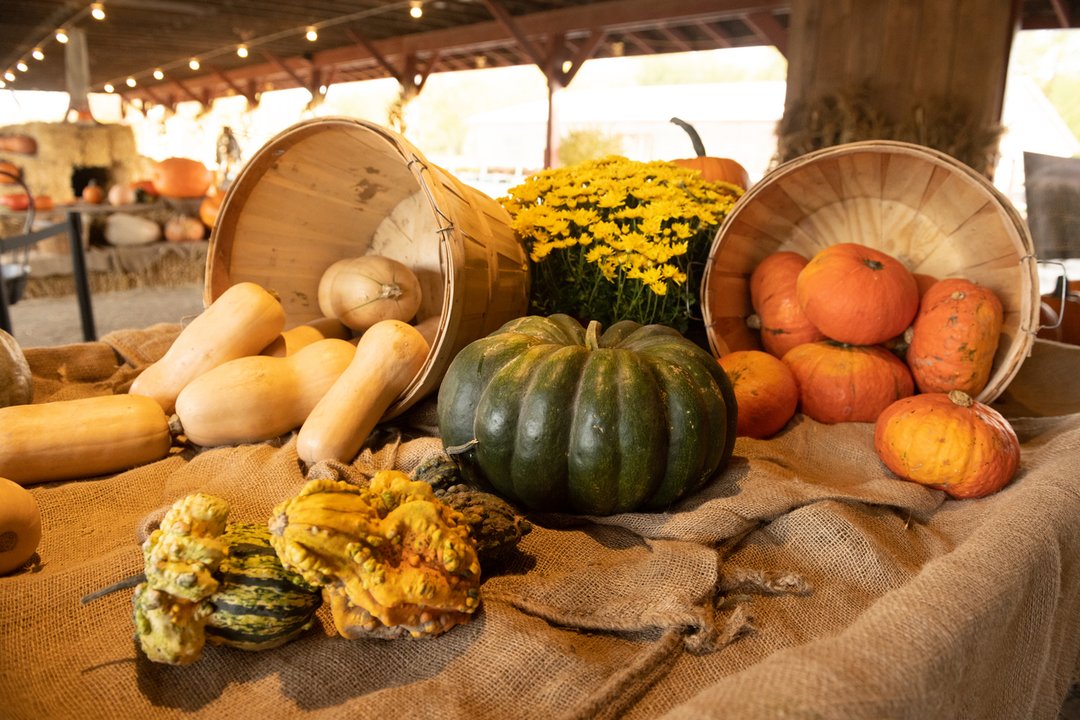
Enuma Okoro
Aug. 12, 2024
Harvest time encourages us to reflect on where we are in our lives.

iStock-1338923417
A few days ago, I was leaving the train station when I noticed a small farmer’s market had set up nearby. There were big fire-engine-red chilli peppers, firm green onions, juicy cherry tomatoes, basil plants with full leaves, cartons of purple tinted blueberries and lush raspberries. It was such a rich vision of abundance and life that it stopped me in my tracks.
As August plays out, we have a growing awareness that the summer is coming to an end. Yet the cornucopia of produce reminded me that August is also the beginning of something, the harvest season that will unfold into the autumn, and in which much that has been planted over the year reaches ripeness. For farmers and gardeners, it’s a crucial time. But for many of the rest of us, disconnected from the rhythms of the natural world, it is easy to forget that a harvest season exists. Yet there are beautiful ways it can help us to consider our own lives.
So much is happening in “The Harvesters” (1565) by Pieter Bruegel the Elder — it is like an unfolding story revealing itself the longer you look at it. “The Harvesters” was one of a series of paintings that Bruegel made focusing on the different labours that had to be undertaken in each season of the year. Amid the golden fields and the green and grey expanse of land in the background, Bruegel seems to collapse multiple elements of harvest season into one image. The eye is drawn to everything all at once, but I notice most those in the foreground. Two men are working hard at cutting and sorting wheat, while another man is carrying jugs of drinks to a cluster of people eating and resting. The working men and the women in the background who gather and carry the wheat reveal the hard work of harvest season. The Earth will provide her gifts, but we still have our part to play to do the work of reaping it.
You can only harvest what has already been sown. Perhaps, then, August is a moment to consider what we ourselves have planted in our lives in the past seven months. Many of us start the year with some consideration of what we want to work towards in different areas of our lives. Whether we’ve set resolutions, goals, or intentions, as the months wear on we can easily lose track of those aspirations. Life gets in the way. But having sown those seeds, now could be the time to think about what shoots have grown from them.
The group sleeping and eating in Bruegel’s painting also reminds us that part of harvest season includes acknowledging the work we have done by engaging in rest and leisure. When we are literally planting and reaping, we recognise the deep exhaustion that we feel from our work. If we don’t work with our hands, if our bodies are not aching with worn muscles or with pain, it is tempting to ignore the call to rest. Yet our bodies, minds and spirits are still fatigued from the labours of our own lives. Perhaps this is the season to acknowledge all that we have done in the year, and to allow ourselves a moment of appreciation for the fruits we have nurtured to ripeness.
There is a quiet but beckoning presence to the 19th-century still life “Blackberries” by American painter John F Francis. A delicate bone-coloured bowl of blackberries sits on a table; loose blackberries lie on the tablecloth, some deep purple, others red and unripe, plucked too early from the bush.
Most things in our lives are seasonal, change and evolution are constant
Sometimes it can be hard to know the right timing for something — when the moment has come to finish a particular creative project, to change jobs, to move into a different stage of a relationship or to end something entirely. We often hold on to things beyond their ripening, when they have already started to lose their nourishing qualities, and even when they are already spoiled. In the last stanza of Seamus Heaney’s beautiful poem “Blackberry-Picking”, he writes about recognising a spoiling blackberry in a hoard of plucked berries, and how the cans in which they were collected would eventually smell of rot. The very last line of the poem is “Each year I hoped they’d keep, knew they would not.”
Both the poem and the painting make me wonder how much we notice and appreciate that most things in our lives are seasonal, that change and evolution are constant. Timing matters. Maybe it’s worth stopping, too, to take stock of what is still life-giving and nurturing for our lives, and what is not.
The 1979 painting “Lady Making Corn Dollies” by Diana Dorothy Rowell is an image of a harvest tradition that dates back thousands of years. In the painting, an elderly woman sits at a wooden table by the window. The dark walls are starkly contrasted with her glowing white dress and the bright white of the window. She stares intently at the blades of straw she is weaving together. On the tabletop are her materials of wheat and ribbon and figures she has already finished.
The tradition of making corn dollies began at a time when people believed in the overlap of the world of spirits and the world of humans. It was common to think that a good harvest was the result of the benevolence of a goddess of the field. So it became customary to use the last sheaf of corn, once the harvest was completed, to create straw figures to house the spirit of the grain, which after the harvest had nowhere to live. These corn dollies would be kept in the homes until the next planting season, at which time they would either be buried in the field or burnt, and the ashes spread over the field to ensure that the spirit provided another good harvest.
People used to think of their lives as tethered to the spiritual, with room for mystery, miraculous interventions and divine assistance. Whatever we think of threading the spiritual through our lives, the tradition of corn dollies shows a thoughtful and reflective approach to things we so often take for granted: a respect for where our food comes from, a knowledge of the changing seasons, the idea of giving to as well as taking from mother nature, a recognition that the fruits of the earth also have a life force to them. When we can pick up our smartphones and order whatever we want for instant delivery, it is tempting to thoughtlessly consume in a way that doesn’t leave room for gratitude. At harvest season, we are invited to remember that there are things to give thanks for. How can we acknowledge that bounty in what we do next?
Copyright The Financial Times Limited 2024
© 2024 The Financial Times Ltd. All rights reserved. Please do not copy and paste FT articles and redistribute by email or post to the web.
This article was legally licensed by AdvisorStream


